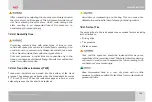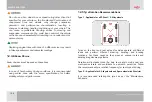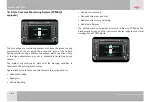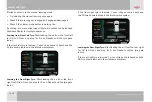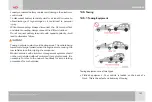
12-18
© Copyright Mahindra & Mahindra Ltd.012016
W12L12
Limitations
•
The TPMS monitors only tyre pressure and temperature. It does
not monitor conditions such as tyre wear
•
The TPMS will not be able to detect an instant tyre burst and
inform the driver in advance
•
There may be the possibility of getting all the tyre location
indicators on the TPMS display blinking along with the TPMS
telltale, on passing environment area prone to heavy power lines
and RF signal. It will come back to normal condition whenever
interference gets cleared
Fault at spare position will be displayed after swapping or if the
spare itself has a fault. If ‘spare tyre rectified’ is acknowledged
without rectifying the fauIt, the TPMS cannot detect it. It is the
user’s responsibility to check the spare tyre before starting the
vehicle.
12.6.7 TPMS — Points to Remember
•
It is recommended to fill the pressure to 32 psi at a digital gauge
station only
•
Every 15 days, inflate all the tyres up to 32 psi and inflation
should be done at cold condition/ambient temperature
•
Pressure deviation between the TPMS display and gauge will
depend upon the following factors:
– Atmospheric pressure
– Error in pressure filling gauge (not calibrated)
– Air leakage during inflation/deflation
•
TPMS measures the absolute pressure of the tyre, not relative
pressure (gauge pressure)
•
Pressure deviation is defined for 0.5 psi (min) and 3 psi (max)
•
If the vehicle battery/fuse is disconnected and reconnected, it
will update the pressure after the vehicle is driven or sensor is
activated
•
It is mandatory that manual learning should be performed if the
vehicle tyres are rotated or any of the tyres sensors are
replaced, else the system will give a false alert with respect to
false location
WHEELS AND TYRES


